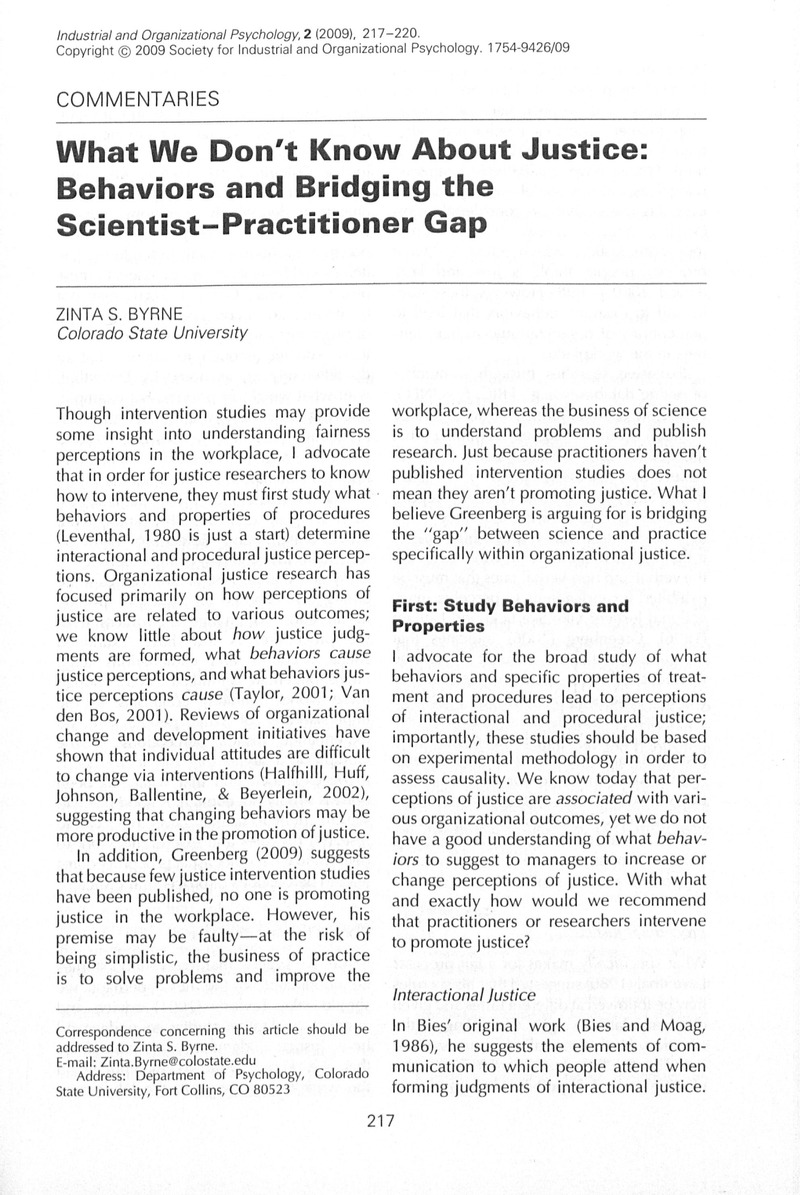Crossref Citations
This article has been cited by the following publications. This list is generated based on data provided by Crossref.
Greenberg, Jerald
2009.
Applying Organizational Justice: Questionable Claims and Promising Suggestions.
Industrial and Organizational Psychology,
Vol. 2,
Issue. 2,
p.
230.
Vîrgă, Delia
Schaufeli, Wilmar B.
Taris, Toon W.
van Beek, Ilona
and
Sulea, Coralia
2019.
Attachment Styles and Employee Performance: The Mediating Role of Burnout.
The Journal of Psychology,
Vol. 153,
Issue. 4,
p.
383.



